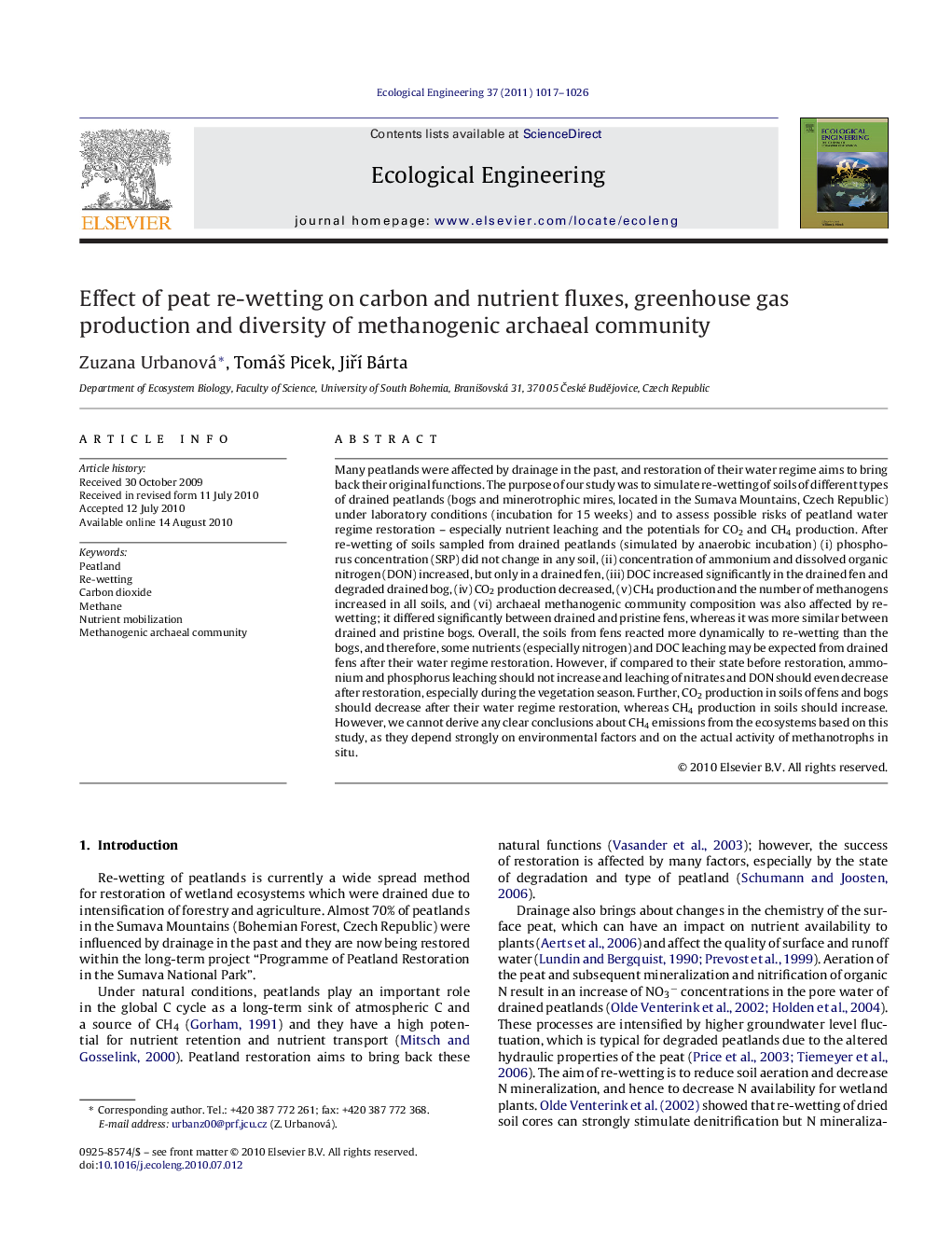| کد مقاله | کد نشریه | سال انتشار | مقاله انگلیسی | نسخه تمام متن |
|---|---|---|---|---|
| 4390373 | 1305169 | 2011 | 10 صفحه PDF | دانلود رایگان |

Many peatlands were affected by drainage in the past, and restoration of their water regime aims to bring back their original functions. The purpose of our study was to simulate re-wetting of soils of different types of drained peatlands (bogs and minerotrophic mires, located in the Sumava Mountains, Czech Republic) under laboratory conditions (incubation for 15 weeks) and to assess possible risks of peatland water regime restoration – especially nutrient leaching and the potentials for CO2 and CH4 production. After re-wetting of soils sampled from drained peatlands (simulated by anaerobic incubation) (i) phosphorus concentration (SRP) did not change in any soil, (ii) concentration of ammonium and dissolved organic nitrogen (DON) increased, but only in a drained fen, (iii) DOC increased significantly in the drained fen and degraded drained bog, (iv) CO2 production decreased, (v) CH4 production and the number of methanogens increased in all soils, and (vi) archaeal methanogenic community composition was also affected by re-wetting; it differed significantly between drained and pristine fens, whereas it was more similar between drained and pristine bogs. Overall, the soils from fens reacted more dynamically to re-wetting than the bogs, and therefore, some nutrients (especially nitrogen) and DOC leaching may be expected from drained fens after their water regime restoration. However, if compared to their state before restoration, ammonium and phosphorus leaching should not increase and leaching of nitrates and DON should even decrease after restoration, especially during the vegetation season. Further, CO2 production in soils of fens and bogs should decrease after their water regime restoration, whereas CH4 production in soils should increase. However, we cannot derive any clear conclusions about CH4 emissions from the ecosystems based on this study, as they depend strongly on environmental factors and on the actual activity of methanotrophs in situ.
Journal: Ecological Engineering - Volume 37, Issue 7, July 2011, Pages 1017–1026